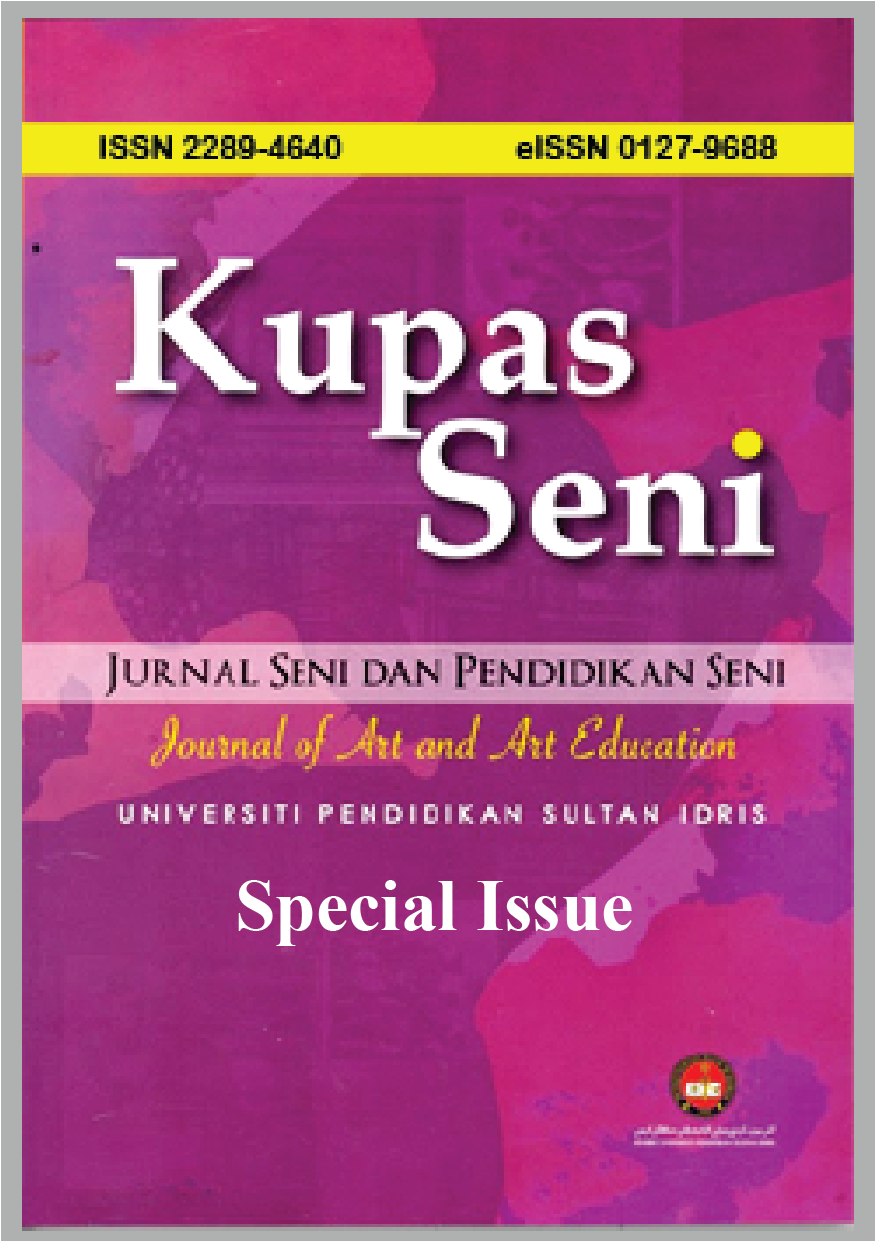Brianiac Quantum Leap (BQL) Application to Improve Preschool Children's English Competence Through Exploration of Art and Aesthetics
Aplikasi Brianiac Quantum Leap (BQL) Bagi Meningkatkan Penguasaan Bahasa Inggeris Kanak-Kanak Prasekolah Menerusi Eksplorasi Seni dan Estetika
DOI:
https://doi.org/10.37134/kupasseni.vol10.sp.2.2022Keywords:
Brianaic Quantum Leap, Art Exploration, Aesthetics, TechnologyAbstract
This study is for the purpose and content of the effectiveness of Brianiac Quantum Leap (BQL) in improving children’s language proficienct through exposure to artistic and aethetic exploration. BQL is a material developed manually and digitally with different physical and cognitive aspects in enhancing children's intuitive imagination through art activities and learning processes. Brianiac Quantum Leap (BQL) has been developed to respond to the recommendations, content and goals of the National Preschool Standard Curriculum (KSPK), for activities that are enjoyable, creative and provide experiences given to children through information on the Pillars of Physical Development and Aesthetics. Thus, this study also searches for various aspects of the concept of art education with digital utilization of the teaching and learning process of teachers. This material was run on three preschool teachers of various agencies to obtain robust data for improvement. The study was conducted on 5 preschool students of various agencies selected. Non -random sampling technique of special sampling type (perposive sampling) is used to obtain data in this study. Study data were collected qualitatively through observations, records and interviews. The results show that the encouraging results of children have a positive impact on the mastery of artistic elements through the use of technology based on the implementation of activities. This significant study also helps in the delivery of teaching by teachers related to art education based on 21st century education as well as the current pandemic situation. The analysis of the study also found that 90% of respondents showed positive behavior towards the use of BQL in the emphasis of art and aesthetics education in addition to expanding this field in the world of early childhood education to the optimal level of knowledge.
Downloads
References
Intan Shafinaz Mohammad., Syafiq Abdul Halim., Ahmad Luqman Jamil., & Muhammad Rashidi Abdul Razak. (2018). Persepsi Pengguna Terhadap Pembangunan & Penggunaan “Digital Trainer-Book Kit” Sebagai Alat Bantuan Pengajaran dan Pembelajaran untuk Kursus Elektronik Digital. e-Jurnal LIS Liga Ilmu Serantau 2018, Johor, Malaysia.
Jung, T. (2019). Augmented Reality and Virtual Reality. The Power of AR and VR for Business. Springer Nature Switzerland AG.
Ling, Y. L., & Charles Muling Libau. (2020). Peranan bahan bantu mengajar dan persekitaran maklum balas dalam meningkatkan kualiti pembelajaran pelajar. National Research Innovation Conference (NRICon 2020), Punjab, Pakistan.
Mohd Kamal Mohd Ali., Norasmah Mohd Noor., Rashidah Elias., & Rosliza A. Aziz. (2013). Interpretasi lukisan awal kanak-kanak: Panduan kepada pendidik awal kanak-kanak. Pusat Penyelidikan Perkembangan Kanak-kanak Negara, Universiti Pendidikan Sultan Idris.
Norly Jamil., Nadia Akma Ahmad Zaki., Nor Zuhaidah Mohamed Zain., & Norasikin Fabil. (2013). Motivasi dan penceritaan digital interatif dalam pendidikan awal kanak-kanak. International conference on special education 2013 (CAPEU), Aceh, Indonesia.
Ratnasari, E. M. (2020). Efektifitas Penggunaan Buku Cerita Bergambar terhadap Kecerdasan Visual Anak Prasekolah. Jurnal PG-PAUD Trunojoyo: Jurnal Pendidikan dan Pembelajaran Anak Usia Dini. Vol, 7, 10-16.
Shah Balkesh Mohd Supar., & Aliza Alias. (2017). Penguasaan kosa kata bahasa Inggeris murid prasekolah melalui teknik bacaan kongsi (shared reading). Prosiding Seminar Pendidikan Serantau ke-VIII, Bangi, Malaysia, 847-852.
Sharifah Nor Puteh., & Aliza Ali. (2016). Pendekatan bermain dalam pengajaran bahasa dan literasi bagi pendidikan prasekolah. Jurnal Pendidikan Bahasa Melayu, 1(2), 1-16.
Tiong, L. L., Dik Anak Nira., Rajendran, K. S., Yii, M. Y., Lu, C. S., & Verzeliza Narina Anak Malang. (2020). Pembelajaran bahasa Inggeris dengan “leef” dalam kalangan murid prasekolah. Proceedings of International Conference on the Future of Education (IConFEd 2020), Institute of Teacher Education Tuanku, Penang, Malaysia.
Zakiah Mohamad Ashari., Azlina Mohd. K., & Yoe, K. J. (2013). Keberkesanan Modul Belajar Melalui Bermain terhadap Kefahaman Pengalaman Pranombor Kanak-kanak Prasekolah. Journal of Education and Practice (9): 305-312.





